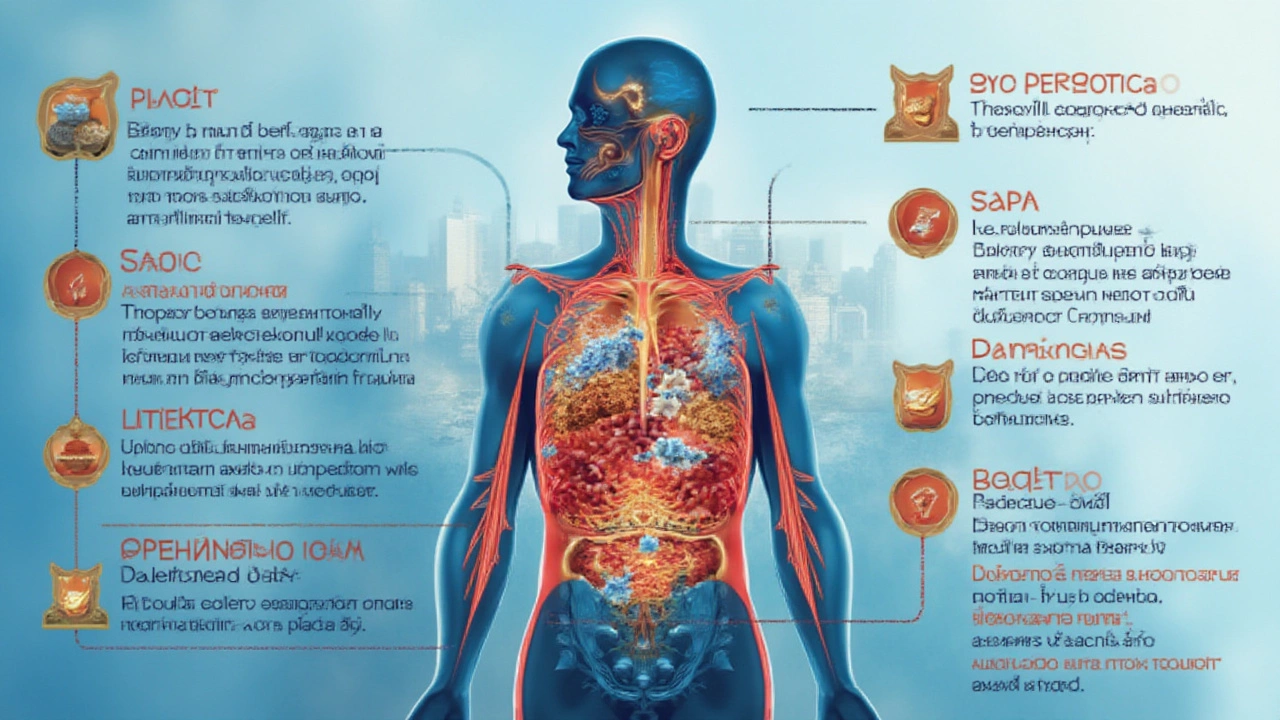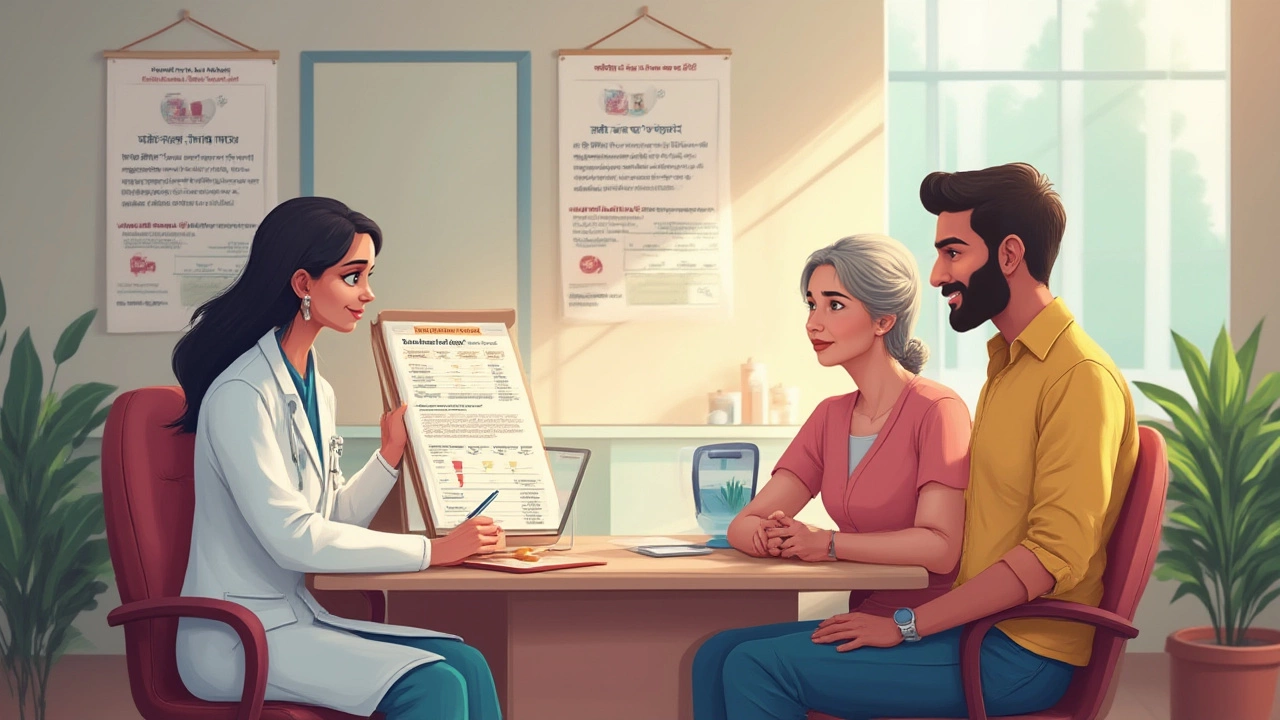I once heard someone say, "diabetes isn't a sprint—it's a marathon you never signed up for." Every year, more people around the globe are thrown into this never-ending race. The numbers are mind-blowing: more than 570 million people worldwide are expected to have diabetes by the end of 2025, and most of them are searching for ways to get ahead. The hunt for safe and effective diabetes medication is more intense than ever, not only for better blood sugar control but for an easier, healthier life. The right medication can mean the difference between a humdrum daily routine and hospital visits. But what's truly at the top of the prescription charts right now?
Why Diabetes Medication Matters More Than Ever
The global diabetes crisis isn’t just a scary graph on a medical chart; it feels personal for anyone living with high blood sugar. Even one skipped dose or one unchecked reading can knock life off balance. Medications are at the heart of diabetes management, doing the quiet work of lowering glucose, preventing complications, and making it possible for people to eat birthday cake with their kids—or, in my case, share mangoes with Mira—without constant worry.
People new to diabetes might not realize how many pills, injections, or gadgets are out there now. There’s an entire pharmacy aisle (and then some) dedicated to managing blood sugar. Every year, scientists race to create new formulas that are easier to take, come with fewer side effects, or offer extra perks like protecting the heart or helping with weight.
So, how popular is diabetes medication? It’s not just about how often they’re prescribed—people also share their experiences on social media and review sites. Docs track which meds stick around and which ones fizzle out. Statista, a leading market data platform, reported that global sales for diabetes drugs topped $60 billion, with more than 70% of those prescriptions being written for type 2 diabetes. That tells you how giant this market is and how crucial picking the right pill or injection is for everyday folks.
Here’s an interesting tidbit: even with all these fancy new diabetes drugs, one classic tablet still rules the charts. And it’s been around longer than most readers of this blog have been alive.
The Reigning Champion: Metformin
Ask any doctor, pharmacist, or regular Indian uncle in the park which drug they know for diabetes—the answer is usually metformin. It’s the default starting point, the comfort blanket, and, in 2025, still the king of diabetes pills.
Metformin, first introduced in the 1950s, became the gold standard once doctors understood how it helps. Here’s the secret sauce: metformin helps your body respond to natural insulin better and lowers the amount of sugar your liver sends into your blood. No bizarre science, no crazy machinery—just a daily tablet (or three).
It’s not just popular because it works; it’s popular because it works safely. You don’t need to poke yourself or worry about your kidneys unless your doctor says so. Most folks tolerate it well, and it doesn’t cause low blood sugar (hypoglycemia), which is a common fear with some diabetes medicines.
Let’s talk numbers again—the American Diabetes Association (ADA) still recommends metformin as the first-line treatment for type 2 diabetes, unless you can’t take it due to kidney trouble or other rare conditions. The latest ADA Standards of Care in 2025 show that nearly 80% of all people newly diagnosed with type 2 diabetes start their journey on metformin, either alone or in some combo.
Here’s what else keeps metformin at the top of the popularity charts:
- It’s cheap and widely available—even in most government hospitals.
- It can help with weight maintenance; some studies report small but consistent weight loss compared to other diabetes pills.
- Doctors sometimes prescribe it for prediabetes, women with PCOS, and people at high risk for developing diabetes.
Now, not everything is rosy. Some folks get upset stomach, diarrhea, or a weird metallic taste. Rarely, it can affect vitamin B12 levels or (VERY rarely!) trigger a dangerous condition called lactic acidosis. That’s why doctors always keep tabs on kidney function. But on balance, the benefits usually outweigh the risks for the vast majority.
So if you ask anyone in 2025, “what is the most popular medication for diabetes?” you’ll likely hear a hearty, “Metformin!” before you finish the question.

What About the Newer Medications?
If you think diabetes pills haven’t changed since the days of big, noisy glucose meters, you’re in for a surprise. New classes of medications have changed the diabetes game. While metformin’s still at the summit, drugs like SGLT2 inhibitors, GLP-1 receptor agonists, and DPP-4 inhibitors are giving it some competition—especially for people with other health problems or who need extra help lowering blood sugar.
SGLT2 inhibitors, with names ending in '-gliflozin' (canagliflozin, empagliflozin, dapagliflozin), are especially buzzy right now. Why? They make the kidneys flush out excess sugar through urine. That’s a simple, elegant trick—and has the side bonus of lowering blood pressure and even shedding a few kilos. People with both diabetes and heart disease are seeing genuine benefits here. In fact, in 2025, many new clinical guidelines recommend an SGLT2 inhibitor for people with type 2 diabetes and heart failure—even before other options.
GLP-1 receptor agonists (like semaglutide, dulaglutide, liraglutide) are another hot topic. They mimic hormones you naturally release after meals, helping your body release insulin just when you need it. And yes, these are the same drugs making headlines for weight loss in 2025. Beyond blood sugar, they help people drop significant weight—a real bonus since the majority of folks with type 2 diabetes also struggle with their weight.
If you love data, here’s a quick table comparing the main features of popular diabetes medications:
| Medication | Main Use | Key Benefits | Common Side Effects | Typical Cost (India) per month |
|---|---|---|---|---|
| Metformin | Type 2 Diabetes | Proven, safe, inexpensive, weight neutral/loss | Stomach upset, diarrhea | ₹30-₹150 |
| SGLT2 Inhibitors | Type 2 Diabetes, Heart Disease | Lower sugar, heart & kidney protection, weight loss | Yeast infections, dehydration | ₹1600-₹3000 |
| GLP-1 RAs | Type 2 Diabetes, Obesity | Weight loss, low risk of hypoglycemia, cardio protection | Nausea, vomiting | ₹3200-₹7000 |
| DPP-4 Inhibitors | Type 2 Diabetes | Few side effects, ok for kidney problems | Nasal congestion, joint pain | ₹900-₹2000 |
The catch? Newer meds often cost more and may have insurance restrictions. But they're life-changing for some people, especially if your doctor feels you need more than just metformin. Choosing a medication now depends more on personal health profiles, co-morbid conditions, and what you and your doctor decide together—not just what’s cheapest or oldest.
Doctors sometimes combine medications for the best results—think metformin plus a GLP-1 agonist for someone struggling with weight, or metformin plus an SGLT2 inhibitor for someone with a weak heart. No more "one-size-fits-all." Your diabetes treatment is now as unique as your fingerprint.
Tips for Getting the Most from Your Diabetes Medication
Taking diabetes medication is only part of the puzzle. Getting the full bang for your buck means making a few habits non-negotiable. After watching my own family members struggle—and thrive—I’ve picked up a few tips worth passing along:
- Take medications at the time your doctor prescribes. Some glucose-lowering pills work best with meals, others before breakfast, and some, like GLP-1 injections, are weekly.
- Don’t skip doses unless your doctor says it’s ok. "I'll take double tomorrow" is a recipe for disaster, not discipline.
- Log your sugar readings. Apps on your phone make it easy, or even a simple handwritten log works. Patterns matter more than single spikes!
- Stay in touch with your doc or diabetes educator, especially after changing medication or doses. They can help catch side effects before they get serious.
- Double-check for interactions with other medicines—some common antibiotics and heart medicines can tweak how your diabetes meds work.
- If you feel dizzy or notice new symptoms like swelling, rash, or severe stomach pain, check with your doctor right away.
- Don’t be shy about asking for cheaper brands, especially for metformin—generics are just as effective.
I know plenty of people who keep their pillbox by their toothbrush or wrap up Monday-to-Sunday tablets for the week on Sunday mornings, making it nearly impossible to forget. Find a trick that works for you and stick with it.
If you want to get geeky, ask your doc about the "time in range" metrics. Modern glucose meters and continuous glucose monitors (CGMs) can track how often your blood sugar stays in target—usually aiming for 70-180 mg/dl about 70% of the time. Medications like metformin and GLP-1 RAs can actually make reaching these targets easier.

Could Diabetes Medication Become Obsolete?
Here’s a curveball: some scientists and futurists are already asking if daily diabetes meds might become a thing of the past. There's hope that one day, tech like closed-loop insulin pumps, stem cell implants, or even microbiome modification could put the "marathon" of diabetes management to rest. That'd be something, wouldn't it?
But as of 2025, the honest truth is, medication remains the backbone for most people with diabetes. Metformin is still the diabetes medication doctors prescribe first. The newest meds build on that foundation—giving people more tools to live longer, healthier, and more enjoyable lives.
What really matters is this: whatever your prescription, keep your curiosity alive, ask questions, and treat your treatment plan as a partnership. The "most popular medication" gets you started—but finding what keeps you healthy, mobile, and happy for decades to come is the bigger win. And who knows? Next year, something new might take the throne. That’s the marathon. We’re all running it together.





